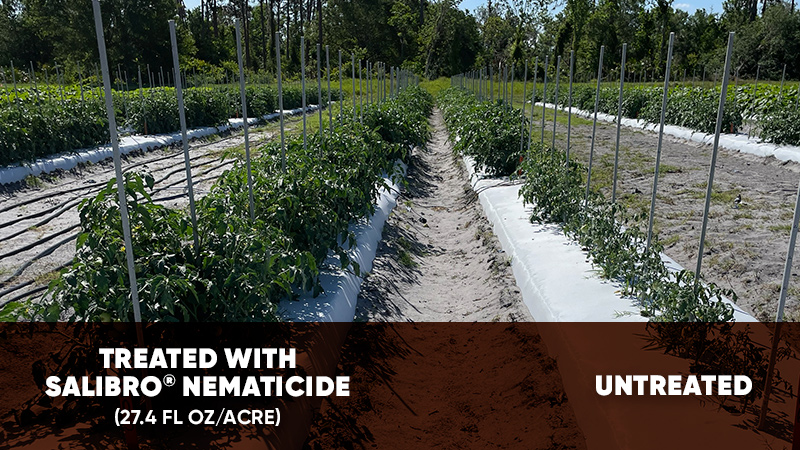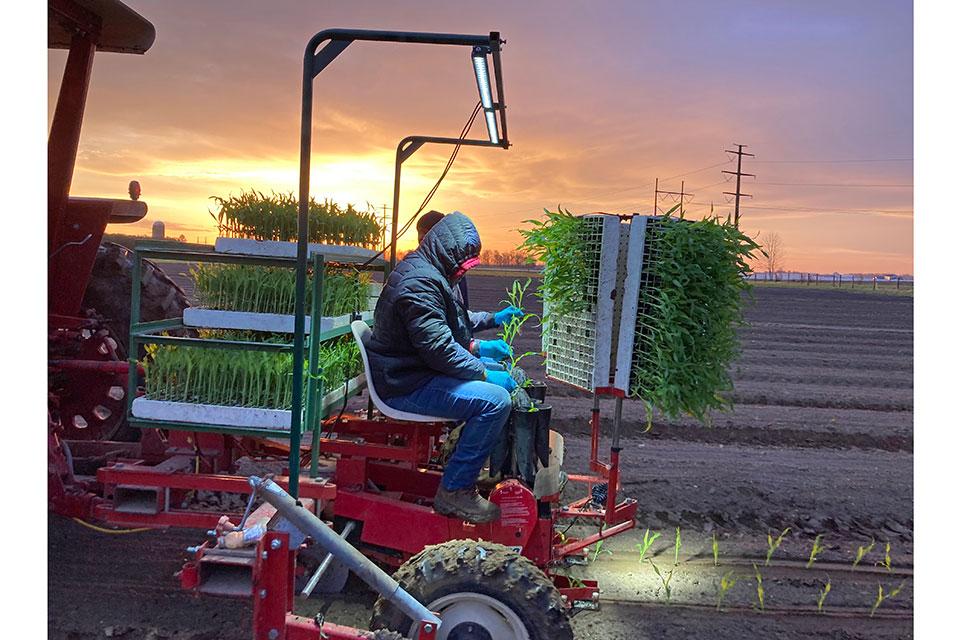Improving Water Quality and Food Safety on the Farm
As the drought continues in the West, vegetable growers are using water as efficiently as possible. Retaining and reusing sprinkler runoff water can be an important strategy to improving efficiency and protecting water quality. Suspended sediments, pesticides, and nutrients carried in irrigation runoff can potentially impair rivers and estuaries downstream of agricultural fields.
However, the current leafy green marketing agreement (LGMA) now requires more frequent testing of water stored in open reservoirs and retention ponds. The threshold for generic E. coli concentration is below 10 colony forming units (CFU) per 100 ml of water.
To assure the concentration of generic E. coli remains below the LGMA metric, tail water intended for reuse on leafy green crops usually needs to be chlorinated to kill potentially harmful microbial pathogens.
PAM Can Help
Previous studies we conducted show the efficacy of chlorine can be greatly increased by settling out fine, suspended sediments often carried in sprinkler runoff. Also, if runoff is discharged off site, removing pesticides bound to suspended sediments can protect aquatic organisms in offsite waterbodies.
Past field trials we conducted show that adding polyacrylamide (PAM) to irrigation water at a low concentration (< 5 ppm) is an effective way to minimize erosion in sprinkler-irrigated fields and keep tail water clean. But accurately injecting PAM into a pressurized irrigation system is not a simple process.
PAM is an inexpensive polymer molecule that has been used for controlling soil erosion in furrow-irrigated fields since the early 1990s. Dry PAM powder becomes gooey and viscous when moistened and is almost impossible to uniformly dissolve into water. You can find emulsified oil formulations of PAM, but they require sophisticated pumps to meter it into a pressurized irrigation system and trained staff to assure the application rate is accurate. Also, PAM must be injected continuously throughout the irrigation to be effective in sprinkler applications.
Recently, we developed and evaluated some simpler approaches to using dry PAM to control sediment in sprinkler runoff.
Pressurized Water Helps Dissolve PAM
The first method uses an applicator to dissolve dry PAM into pressurized irrigation water. The applicator consists of cartridges filled with PAM granules that insert into a series of cylindrical chambers.
A small pump diverts a portion of the irrigation water from the main line into the applicator’s inlet. PAM slowly releases from the cartridges as irrigation water streams through the space between the cartridges and the outer walls of the chambers. Vanes surrounding the cartridges increase turbulence of the flowing water to maximize the dissolution of PAM.
Field testing of the applicator demonstrates that it could reduce the concentration of suspended sediments carried in sprinkler runoff by 90%.
A Smart Applicator Is Another Option
A second approach for reducing sediment in runoff is to use a smart applicator that automatically applies dry PAM into runoff water flowing in farm ditches.
This type of applicator is suspended on a platform above a ditch and uses a hopper filled with dry PAM and an auger system controlled by an electric motor and small computer to drop PAM down a tube into the runoff. A weir and float mechanism located upstream are used to monitor the flow rate of the runoff so the computer can adjust the frequency that PAM is applied.
A yearlong study at a commercial farm showed that the applicator was effective in removing 97% of the suspended sediments transported in runoff. Applying PAM with this device in one ditch removed an average of 15 tons of sediment per month during the growing season.
Although more effective than the chambered PAM applicator designed for pressurized irrigation water, the ditch applicator requires more maintenance. PAM needed be added weekly during the irrigation season, and the ditches had to be cleaned out periodically using a backhoe and the removed sediment needed to be reapplied and spread back in the fields. The chambered applicator only required periodic refilling of the cartridges with PAM and has the advantage that the fine clay sediment is retained onsite, which may help improve the physical structure of the soil over time.
Both approaches of using dry PAM show promise for greatly reducing soil erosion, as well as helping improve water quality and the efficacy of chlorine treatment of tail water. By considerably reducing the concentration of sediment from runoff water, chlorine is more effective in controlling E. coli and other microbial human pathogens that could potentially contaminate produce.










